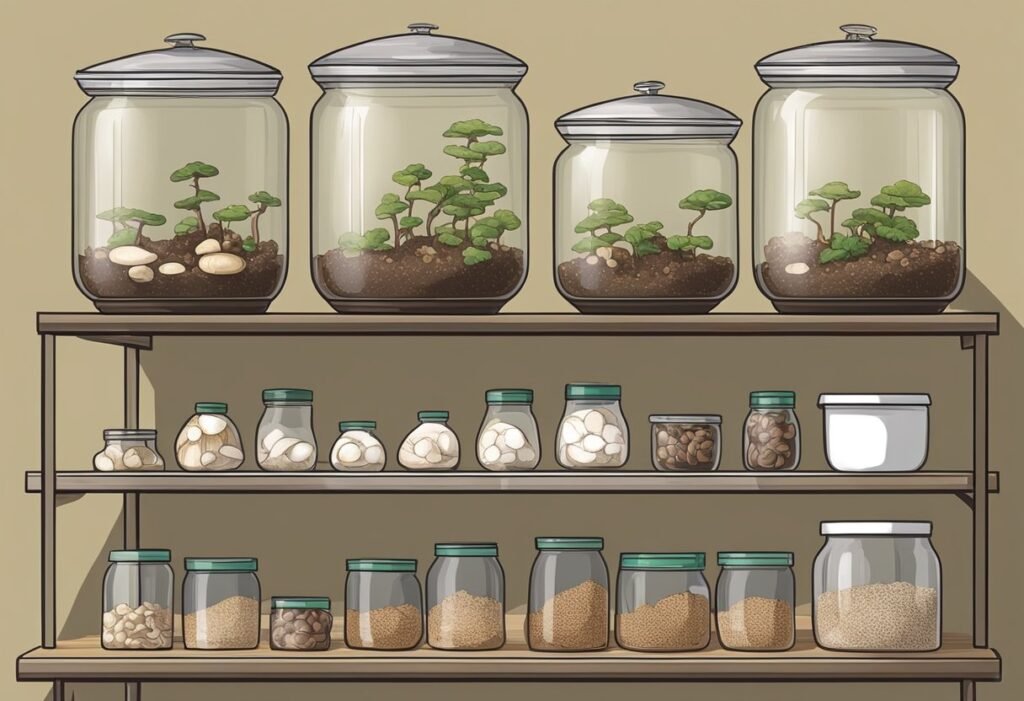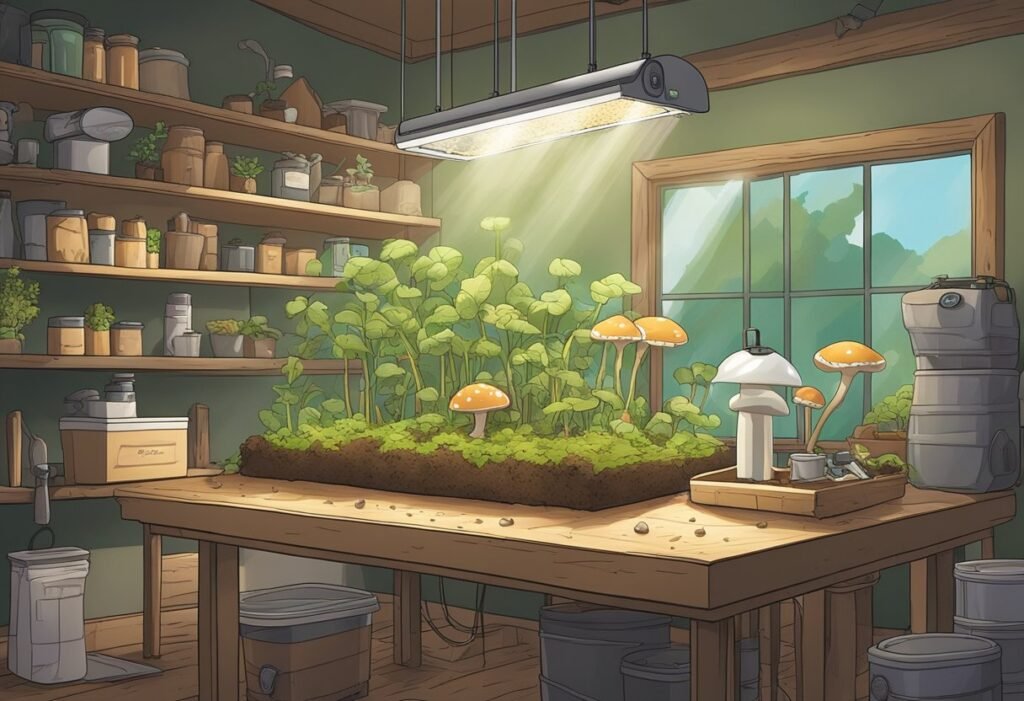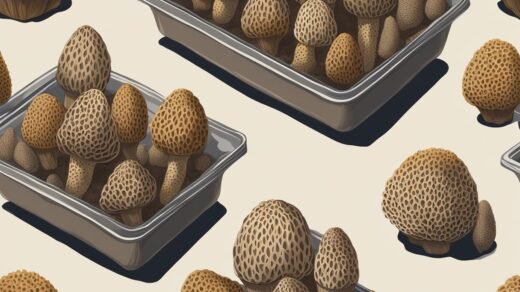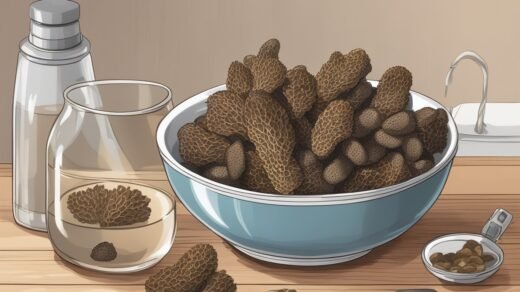Shiitake mushrooms are a popular ingredient in many dishes, and growing them at home is a great way to ensure a fresh supply. While some may think that growing mushrooms is a difficult and complicated process, it can actually be quite simple. With the right materials and a little bit of patience, anyone can learn how to grow shiitake mushrooms indoors.
To get started, it’s important to understand the basic process of growing shiitake mushrooms. The first step is to choose a growing medium, which can be anything from sawdust to logs. Next, the medium is inoculated with mushroom spawn, which is essentially a starter culture of shiitake mushroom mycelium. The mycelium will grow and colonize the medium, eventually producing mushrooms.
There are a few different methods for growing shiitake mushrooms indoors, and each has its own advantages and disadvantages. Some people prefer to use sawdust or straw as a growing medium, while others opt for logs. Regardless of the method you choose, it’s important to maintain a sterile environment to prevent contamination and ensure a successful harvest.
Understanding Shiitake Mushrooms

Shiitake mushrooms are a popular edible mushroom that is native to East Asia. They are commonly used in many dishes due to their rich, earthy flavor and meaty texture. In this section, we will explore the different species and varieties of shiitake mushrooms, as well as their health benefits and uses.
Species and Varieties
Shiitake mushrooms belong to the species Lentinula edodes, which is also known as Lentinula boryana or Agaricus edodes. There are many different varieties of shiitake mushrooms, each with its unique characteristics. Some of the most popular varieties include:
- Donko: This variety of shiitake mushroom has a darker cap and a firmer texture than other varieties. It is commonly used in Japanese cuisine, where it is often marinated in soy sauce and mirin.
- Black Forest: This variety of shiitake mushroom is grown in Germany and has a rich, smoky flavor. It is often used in soups and stews.
- Golden Oak: This variety of shiitake mushroom is grown in the United States and has a mild, nutty flavor. It is often used in stir-fry dishes and omelets.
Health Benefits and Uses
Shiitake mushrooms are not only delicious but also have several health benefits. They are a good source of B vitamins, including niacin, riboflavin, and pantothenic acid. They also contain minerals such as copper, selenium, and zinc. Some of the health benefits of shiitake mushrooms include:
- Boosting the immune system: Shiitake mushrooms contain a polysaccharide called lentinan, which has been shown to boost the immune system.
- Lowering cholesterol: Shiitake mushrooms contain compounds called eritadenine and beta-glucans, which have been shown to lower cholesterol levels.
- Fighting cancer: Some studies have suggested that shiitake mushrooms may have anti-cancer properties due to their high levels of lentinan.
Shiitake mushrooms can be used in a variety of dishes, including soups, stews, stir-fries, and omelets. They can also be dried and used in teas or supplements. When selecting shiitake mushrooms, look for ones that are firm, plump, and have a slightly shiny surface. Avoid mushrooms that are slimy or have a dull appearance.
Setting Up Your Indoor Mushroom Farm

Choosing a Location
When setting up an indoor mushroom farm, it is important to choose a location that has the right conditions for growing shiitake mushrooms. The ideal location should be a cool, dark, and humid place with good ventilation. Avoid areas with direct sunlight, as this can cause the growing area to become too hot and dry.
Preparing the Growing Area
Before setting up your indoor mushroom farm, it is important to prepare the growing area properly. This involves cleaning and disinfecting the area to prevent the growth of unwanted bacteria and fungi. The growing area should also be free of any debris or other materials that could interfere with the growth of the mushrooms.
Selecting the Right Substrate
The substrate is the material on which the shiitake mushrooms will grow. There are several different types of substrate that can be used, including sawdust, straw, and hardwood logs. Each type of substrate has its own advantages and disadvantages, so it is important to choose the right one for your needs.
Sawdust is a popular substrate choice because it is easy to work with and can be sterilized easily. Straw is another popular option, but it can be more difficult to sterilize and may require more maintenance. Hardwood logs are a good choice for those who want a more natural growing environment, but they can take longer to produce mushrooms.
Once you have chosen the right substrate, it is important to sterilize it properly to prevent the growth of unwanted bacteria and fungi. This can be done using a variety of different methods, including steam pasteurization and chemical sterilization.
By following these steps, you can set up an indoor mushroom farm that is ideal for growing shiitake mushrooms. With the right conditions and proper care, you can produce a bountiful harvest of delicious and nutritious mushrooms.
Inoculation and Incubation
Inoculation Techniques
To grow shiitake mushrooms indoors, the first step is to inoculate the substrate with mushroom spawn. There are several techniques for inoculating the substrate, including:
- Spawn run: This involves adding mushroom spawn to a substrate and allowing it to colonize the substrate. The spawn can be added to the substrate in the form of sawdust spawn, plug spawn, or grain spawn.
- Liquid culture: This involves growing mushroom mycelium in liquid culture and then adding the liquid culture to the substrate.
- Agar culture: This involves growing mushroom mycelium on agar plates and then transferring the mycelium to the substrate.
The choice of inoculation technique will depend on the grower’s experience, the availability of materials, and the desired outcome.
Incubation Conditions
After inoculating the substrate, the grower must create the right conditions for the mycelium to grow and colonize the substrate. The ideal temperature for shiitake mushroom mycelium to grow is between 75°F and 81°F (24°C and 27°C). The ideal humidity level is between 80% and 95%.
To maintain these conditions, the grower can use a variety of techniques, including:
- Using a grow tent or grow box to control temperature and humidity.
- Using a humidifier to maintain high humidity levels.
- Using a heating pad or heat lamp to maintain the ideal temperature.
It is important to monitor the temperature and humidity levels regularly and make adjustments as necessary. The mycelium will take several weeks to fully colonize the substrate, and during this time, it is important to maintain optimal conditions to ensure a successful harvest.
Caring for Shiitake Mycelium
Temperature and Humidity Control
Shiitake mycelium requires a consistent temperature range of 65-75°F (18-24°C) for optimal growth. The mycelium should be kept in a dark, humid environment with a relative humidity of 80-90%. To achieve this, growers can use a humidifier or mist the mycelium daily with a spray bottle. It is important to avoid over-saturating the substrate, as this can lead to contamination.
Lighting and Ventilation
Shiitake mycelium does not require light for growth, but proper ventilation is crucial to prevent the buildup of carbon dioxide. Growers can achieve this by using a fan or opening a small vent in the growing area. It is important to avoid direct exposure to sunlight, as this can dry out the substrate and inhibit growth.
Overall, caring for shiitake mycelium requires attention to detail and consistency in temperature, humidity, and ventilation. With proper care, growers can expect to see healthy mycelium growth and a bountiful harvest of delicious shiitake mushrooms.
Harvesting and Storing
Harvesting Techniques
When it comes to harvesting shiitake mushrooms, timing is essential. The mushrooms should be picked when the caps are fully developed but before they start to flatten out. This usually occurs between 5-10 days after the first flush of mushrooms appears.
To harvest the mushrooms, gently twist and pull the stem until it separates from the log or substrate. Avoid pulling the mushrooms by the cap, as this can damage the mycelium and reduce future yields.
Post-Harvest Handling
Once harvested, the mushrooms should be cleaned to remove any debris or dirt. This can be done by gently brushing the caps with a soft-bristled brush or wiping them with a damp cloth.
It’s important to handle the mushrooms gently to avoid bruising or damaging them. Bruised mushrooms will deteriorate more quickly and have a shorter shelf life.
Storage Solutions
Shiitake mushrooms can be stored in the refrigerator for up to a week. To extend their shelf life, they can also be dried or frozen.
To dry shiitake mushrooms, simply spread them out on a baking sheet and place them in a warm, well-ventilated area. They should be fully dry within 24-48 hours. Once dry, store them in an airtight container in a cool, dry place.
To freeze shiitake mushrooms, slice them thinly and place them in a single layer on a baking sheet. Once frozen, transfer them to a freezer-safe container or bag. Frozen shiitake mushrooms will last for up to a year in the freezer.




